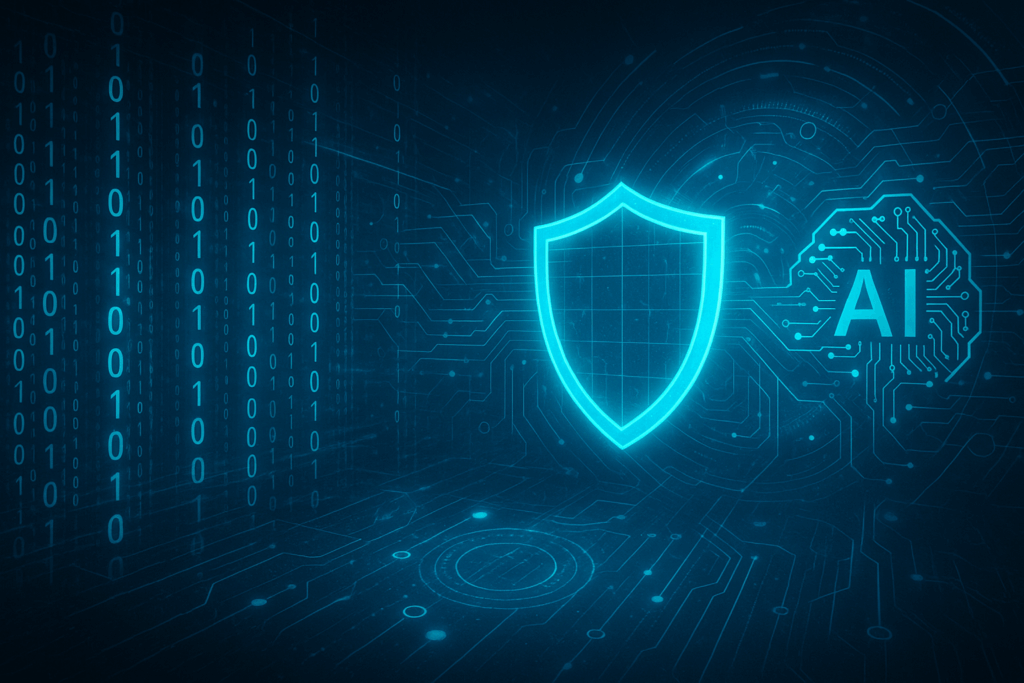
Cybersecurity is an essential aspect of business operations. As we continue to proceed through 2025, the digital landscape continues to change, introducing new types of cyber threats. Small and medium-sized businesses (SMBs), often working with limited resources and expertise, can be especially vulnerable. This blog outlines the key cybersecurity challenges expected in 2025 and offers practical strategies for SMBs to protect their operations.
Understanding the Cybersecurity Landscape in 2025
The Growing Complexity of Cyber Threats
Cyber threats have come a long way from the days of simple viruses and spam emails. Today, we face a sophisticated array of dangers, including advanced persistent threats (APTs), ransomware-as-a-service (RaaS), and AI-driven attacks. APTs involve prolonged, targeted campaigns designed to infiltrate and extract sensitive data, while RaaS has turned ransomware into a subscription-based business model for cybercriminals. Meanwhile, AI is being weaponized to create more effective phishing schemes and malware that adapts in real time. The tools and tactics of cybercriminals are becoming more advanced, making it increasingly difficult for businesses to detect and mitigate attacks.
Why SMBs Are Prime Targets
SMBs often lack the financial and technical resources of larger enterprises, making them attractive targets for cybercriminals. Their growing reliance on digital tools and cloud services further expands their attack surface. Recent high-profile breaches, such as those targeting small healthcare providers and local government agencies, highlight the devastating consequences of inadequate cybersecurity. From financial losses to reputational damage, the impact on SMBs can be catastrophic, underscoring the need for robust defense mechanisms.
Emerging Cybersecurity Threats in 2025
AI-Powered Cyber Attacks
Artificial intelligence is a double-edged sword in the cybersecurity realm. While it offers powerful tools for defense, it also empowers attackers to automate and enhance their methods. AI-driven phishing campaigns can craft highly personalized messages, increasing the likelihood of success. Similarly, AI-powered malware can adapt to evade detection, making traditional security measures less effective. The rise of these intelligent threats demands equally intelligent countermeasures.
Supply Chain Vulnerabilities
In an interconnected world, the security of your business is only as strong as the weakest link in your supply chain. Third-party software and vendor relationships introduce significant risks, as demonstrated by high-profile supply chain attacks like the SolarWinds breach. These incidents have ripple effects, compromising not just the targeted organization but also its partners and customers. SMBs must prioritize supply chain security to mitigate these risks.
IoT and Smart Device Exploits
The proliferation of Internet of Things (IoT) devices in SMB environments has created new opportunities for attackers. From smart thermostats to connected security cameras, poorly secured devices can serve as entry points for cybercriminals. For example, the infamous Mirai botnet exploited vulnerable IoT devices to launch massive distributed denial-of-service (DDoS) attacks. SMBs must address these vulnerabilities to protect their networks.
Deepfake and Social Engineering Threats

Deepfake technology is no longer confined to entertainment; it has entered the realm of cybercrime. Attackers are using deepfakes to impersonate executives and manipulate employees into transferring funds or sharing sensitive information. Coupled with increasingly convincing social engineering tactics, these threats are becoming harder to detect. For instance, a recent case involved a deepfake audio of a CEO instructing an employee to make a fraudulent wire transfer. The stakes have never been higher for SMBs to educate their teams on recognizing and resisting such schemes.
Defense Strategies for SMBs
Building a Cybersecurity-First Culture
Cybersecurity isn’t just an IT issue; it’s a company-wide responsibility. SMBs must invest in employee training and awareness programs to foster a proactive mindset. From recognizing phishing emails to understanding the importance of strong passwords, informed employees are the first line of defense against cyber threats.
Leveraging Advanced Security Tools
To counter AI-powered threats, SMBs should adopt AI-driven cybersecurity tools. Solutions like endpoint detection and response (EDR) and extended detection and response (XDR) offer advanced capabilities to identify and neutralize threats in real time. These tools provide SMBs with enterprise-grade protection at a fraction of the cost.
Strengthening Supply Chain Security
Regular audits of third-party vendors are essential to identify and address potential vulnerabilities. SMBs should also implement stricter access controls and continuous monitoring to ensure that their supply chain partners adhere to robust security standards.
Securing IoT Devices
Best practices for securing IoT devices include changing default passwords, enabling encryption, and segmenting IoT devices on separate networks. Regular firmware updates are also crucial to patch known vulnerabilities. By taking these steps, SMBs can significantly reduce the risk of IoT-related breaches.
Incident Response and Recovery Planning
No defense is foolproof, which is why a robust incident response plan is critical. SMBs should conduct regular backups and test their disaster recovery processes to ensure business continuity in the event of an attack. Being prepared can make the difference between a minor disruption and a major catastrophe.
Conclusion
As we look toward 2025, the cybersecurity landscape is becoming more complex and challenging. However, SMBs have the tools and strategies to stay ahead of the curve. By understanding emerging threats and adopting a proactive approach to defense, businesses can turn cybersecurity from a daunting expense into a valuable investment. The key is to stay informed, stay vigilant, and take action. The time to safeguard your business is now—because in the digital age, security is not optional; it’s essential.
How we can help:
CRES Technology ensures to keep your network and data protected so that you can feel secure and confident.

Many of our clients were in danger of becoming a victims of cybersecurity attacks. They needed an IT security to help prevent attacks from ever happening and help them recover if an attack did happen. That’s where CRES Cybersecurity comes in.
With our extensive capabilities in cybersecurity and partnership with top cybersecurity software companies, we enable you to prevent cyber attacks, network exploitation, data breaches, phishing emails, and more. Our RMM audit assesses the health of your network and resources. We offer network penetration testing to prevent network exploitation, implement data loss prevention policies to prevent data breaches, and phishing email testing to teach your staff to identify phishing emails. CRES Technology implements state-of-the-art Endpoint Detection & Response solutions, allowing your company to be able to recover from any kind of damage caused by cybercriminals.
About Irfan Butt

CRES Technology – Founder and CEO
A strategic leader with over twenty years of progressive experience in Business Administration, Finance, Product Development, and Project Management. Irfan has a proven track record in a broad range of industries including hospitality, real estate, banking, finance, and management consulting.





